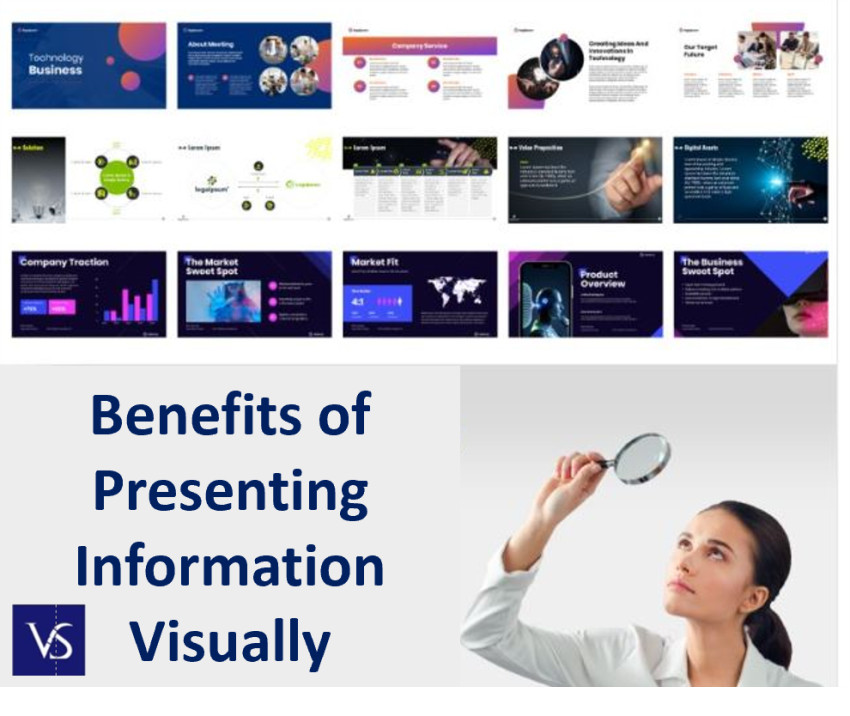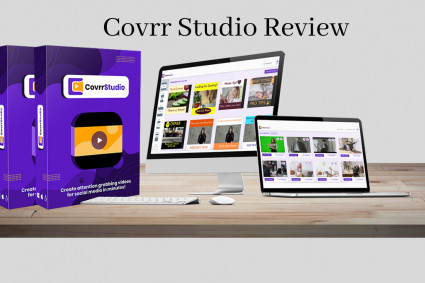
Introduction
The ability to effectively convey information is more crucial than ever. Whether it's in the realm of business, education, or even personal communication, the way we present information can greatly impact how it is received and understood by our audience. While traditional forms of communication such as written reports and verbal presentations have been the go-to methods for sharing information, there is a growing recognition for the power of visual aids in enhancing the effectiveness of communication. In fact, studies have shown that information presented visually is more likely to be retained and understood by individuals compared to traditional methods. With the rise of technology and the availability of various visual tools, the benefits of presenting information visually have become more accessible and practical than ever before. In this article, we will delve into the various advantages of utilizing visual aids in presenting information and how it can revolutionize the way we communicate.
Enhances audience understanding and retention.
In information-saturated world, capturing and retaining audience attention is crucial. Visual presentation of information plays a significant role in enhancing audience understanding and retention. By incorporating visual elements such as graphs, charts, images, and videos, complex concepts can be simplified and made more accessible to a wide range of individuals. Visual aids can stimulate cognitive processes, facilitating the absorption and processing of information. The use of visuals also helps to engage multiple senses, resulting in a more immersive and memorable learning experience. Furthermore, visual representations can convey information more quickly and efficiently than text alone, making it easier for audiences to grasp key points and retain them in their memory. Incorporating visual elements into presentations, reports, and educational materials can greatly enhance audience comprehension and improve the overall effectiveness of communication.
Creates a more engaging experience.
By incorporating visual elements into the presentation of information, it creates a more engaging experience for the audience. Visual aids such as infographics, diagrams, and interactive charts can capture attention and make complex data and concepts easier to understand. The use of colours, images, and typography can also evoke emotions and create a visually appealing aesthetic, keeping the audience interested and invested in the content being presented. Additionally, incorporating multimedia elements like videos or animations can bring the information to life, providing a dynamic and interactive experience that fosters better understanding and retention. Overall, presenting information visually not only enhances comprehension but also adds an element of excitement and interactivity that can greatly improve audience engagement.
Simplifies complex data and concepts.
Through the simplification of complex data and concepts, visual presentation of information offers a valuable advantage in effectively communicating ideas. The use of visual aids allows for the breaking down of intricate information into more digestible components, making it easier for the audience to grasp and retain the key points. By utilizing visual elements such as graphs, charts, and illustrations, complex data can be transformed into visually appealing and intuitive representations. This simplification not only enhances understanding but also enables individuals to make connections and draw conclusions more efficiently. The ability to simplify complex information is especially valuable in professional settings, where clear and concise communication is crucial for decision-making and problem-solving.
Makes information more memorable.
By engaging multiple senses and stimulating cognitive processes, presenting information visually has the inherent ability to make it more memorable. When information is presented in a visual format, it creates a lasting impact on the audience's memory through the combination of visual cues, colours, and spatial organization. Research has shown that visual stimuli have a profound effect on memory retention, as our brains are naturally wired to process and store visual information more effectively than plain text. By incorporating visual elements such as images, diagrams, and infographics, complex concepts become more accessible and memorable, allowing individuals to recall and apply the information when needed. This heightened memorability is particularly beneficial in educational and professional contexts, where retaining and recalling knowledge is essential for long-term success.
Improves overall presentation effectiveness.
Enhances Comprehension and Clarity of Information: Presenting information visually not only improves overall presentation effectiveness but also enhances comprehension and clarity of information. Visual aids help to break down complex ideas and concepts into easily digestible components, making it easier for the audience to understand and grasp the key points being presented. By incorporating visuals such as charts, graphs, and timelines, complex data sets can be visually represented, allowing for a clearer understanding of trends, patterns, and relationships. Additionally, visual aids can help to organize information in a logical and structured manner, guiding the audience through the content and ensuring that the message is conveyed clearly and effectively. By enhancing comprehension and clarity, visual presentations enable the audience to better absorb and retain information, resulting in more successful communication and knowledge transfer.
Information-driven world, visual presentations have become increasingly valuable. From presentations in the workplace to educational materials and marketing campaigns, the benefits of presenting information visually are undeniable. By utilizing engaging and visually appealing graphics, charts, and videos, we can better capture and retain the attention of our audience, convey complex ideas in a more digestible manner, and ultimately enhance the overall effectiveness of our communication. As professionals, it is important to recognize the advantages of incorporating visual elements into our presentations and continuously strive to improve our visual communication skills.
Conclusion
The benefits of presenting information visually cannot be overstated. By utilizing visual aids such as charts, graphs, and images, complex data can be simplified and made more easily understandable for audiences. This not only enhances the overall effectiveness of communication, but also makes it more engaging and memorable for viewers. In a professional setting, visual presentations can also save time and improve efficiency by condensing large amounts of information into a concise and visually appealing format. Additionally, visual aids allow for better retention of information and can cater to different learning styles. Overall, incorporating visual elements in presentations is a valuable tool for effectively conveying information and should be utilized in professional settings.
Are you searching for a supporting design agency to transform your next professional presentation?
Visual Sculptors - Led by Ex-McKinsey designers’ team.
You can search for top presentation design agencies and our design team at Visual Sculptors is eagerly looking forward to discussing with you on your next presentation design project.




